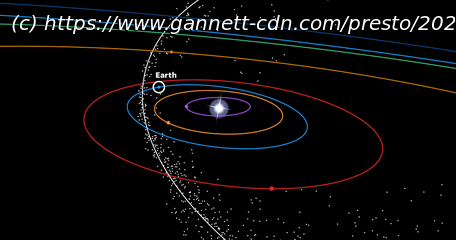Skywatchers around the world can see the Perseid meteor shower, one of the heavens’ most spectacular. Here’s how to see it.
The best summer meteor shower, the Perseids, will reach its peak this week, astronomers say.
The shower is famed for its brilliant, long-lasting rays of light and spectacular « fireballs, » or bursts of light that stay longer than meteors, according to NASA.
The shower is active from July 14 to Sept. 1, but it’s expected to peak Aug. 11, 12 and 13. The best views are from midnight to sunrise on each of those nights.
NASA says that this year the moon will be above the horizon during prime viewing hours, which makes it difficult to get the best view.
One of the best-viewed meteor showers in the Northern Hemisphere, the Perseids are known for their consistent and abundant meteors.
The best Perseid performance we know of occurred in 1993, when the peak rate topped at 300 meteors an hour, NASA says. What’s best about the Perseids is that they can be enjoyed during summer’s warmth, unlike the often nippy nights during the Leonids of November or Geminids of December.
The Perseid shower occurs every year when the Earth passes through the cloud of debris left by Comet Swift-Tuttle. The meteors actually come from dust and particles from the tail of the comet as Earth passes through it during the comet’s orbit of the sun.
Where to see the shower
Can’t see our graphics? Click to reload.
As they enter the Earth’s atmosphere, meteors create a tail of debris as they disintegrate before reaching the ground.
Home
United States
USA — Science The Perseid meteor shower is peaking: A visual guide on where, when...






